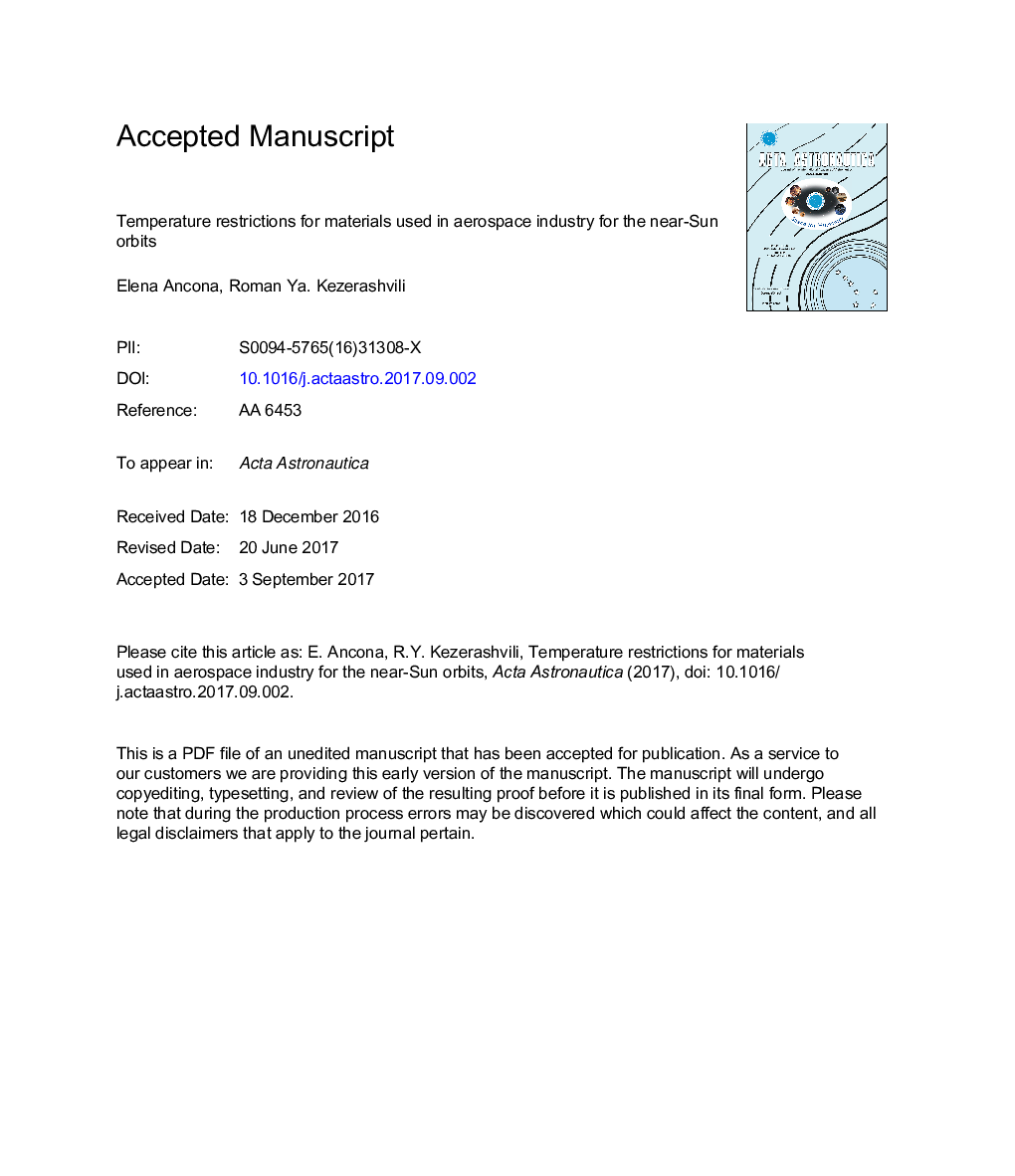| Article ID | Journal | Published Year | Pages | File Type |
|---|---|---|---|---|
| 5472144 | Acta Astronautica | 2017 | 9 Pages |
Abstract
For near-Sun missions, the spacecraft approaches very close to the Sun and space environmental effects become relevant. Strong restrictions on how much close it can get derive from the maximum temperature that the used materials can stand, in order not to compromise the spacecraft's activity and functionalities. In other words, the minimum perihelion distance of a given mission can be determined based on the materials' temperature restrictions. The temperature of an object in space depends on its optical properties: reflectivity, absorptivity, transmissivity, and emissivity. Usually, it is considered as an approximation that the optical properties of materials are constant. However, emissivity depends on temperature. The consideration of the temperature dependence of emissivity and conductivity of materials used in the aerospace industry leads to the conclusion that the temperature dependence on the heliocentric distance is different from the case of constant optical properties [1]. Particularly, taking into account that emissivity is directly proportional to the temperature, the temperature of an object increases as râ2â5 when the heliocentric distance r decreases. This means that the same temperature will actually be reached at a different distance and, eventually, the spacecraft will be allowed to approach closer to the Sun without compromising its activities. We focused on metals used for aerospace structures (Al, Ti), however our analysis can be extended to all kinds of composite materials, once their optical properties - in particular emissivity - are defined.
Related Topics
Physical Sciences and Engineering
Engineering
Aerospace Engineering
Authors
Elena Ancona, Roman Ya. Kezerashvili,
